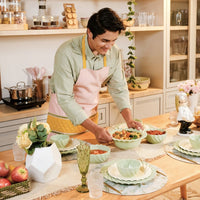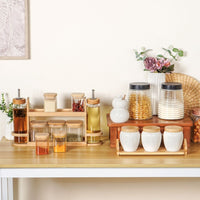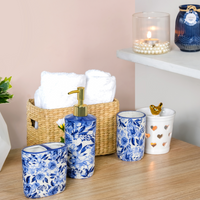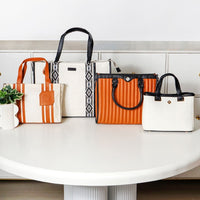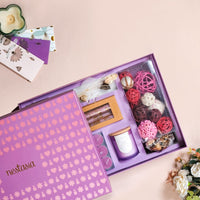When we think about making healthy choices in the kitchen, we usually focus on the food itself, opting for fresh vegetables, whole grains, and organic ingredients. But there’s one crucial piece of the puzzle that often goes unnoticed: the cookware we use every day.
Most people don’t consider how the pots, pans, and utensils that come into direct contact with their meals might affect the nutritional value or even the safety of their food. In reality, cookware can be a silent contributor to our overall health, for better or worse. With concerns ranging from toxic chemical coatings to heavy metal leaching, choosing the right materials for your cookware can have a long-term impact on your well-being.
This guide will help you understand which cookware options are genuinely safe and which ones to avoid. Let’s take a deeper look at what healthy cookware means and how you can make better choices in your kitchen.
Why the Material of Your Cookware Matters?
Each time you heat a pan or cook a meal, there’s a chemical interaction taking place between your food and your cookware. Some materials are stable and non-reactive, meaning they don’t interfere with your food at all. Others, however, may release harmful substances when heated, scratched, or exposed to acidic ingredients.
Here are some of the most common concerns associated with conventional cookware:
-
Chemical leaching: This occurs when compounds from cookware coatings or materials mix into your food during the cooking process. This is particularly worrying with synthetic non-stick surfaces and certain plastics.
-
Toxic fumes: Some non-stick coatings can emit fumes at high temperatures, potentially irritating your lungs or posing health risks with prolonged exposure.
-
Heavy metal exposure: Low-quality cookware made from cheap alloys may contain trace amounts of lead, cadmium, or other metals that are unsafe for consumption.
-
Reactivity with food: Certain metals, like aluminium and copper, can react with acidic foods, altering both the taste and the chemical composition of your meals.
By being mindful of what your cookware is made of, you can reduce these risks and support a cleaner, safer approach to cooking.
Cookware Materials That Are Safe and Healthy
Here’s a breakdown of cookware materials that are considered safe, non-toxic, and effective for everyday cooking.
Cast Iron
Cast iron is a tried-and-tested cookware material that’s been used for centuries. When properly seasoned, it forms a natural non-stick surface that doesn’t rely on synthetic coatings. Cast iron cookware retains heat beautifully, making it excellent for searing, frying, and even baking.
One added benefit of using cast iron is that it can transfer small amounts of dietary iron into your food - a great plus for people with iron deficiencies. However, it’s best to avoid using cast iron for cooking acidic foods like tomato sauces for long periods, as this may cause the food to develop a metallic taste and may damage the seasoning layer.
Stainless Steel
Stainless steel is one of the safest, most durable cookware options available. It doesn’t react with food, even when exposed to high temperatures or acidic ingredients. Look for high-quality stainless steel, such as 304-grade or 18/10 stainless steel, which contains chromium and nickel to resist corrosion and rust.
This type of cookware is ideal for boiling, sautéing, steaming, and making sauces. It’s easy to clean, non-toxic, and highly versatile.
Ceramic-Coated Cookware
Ceramic-coated pans have gained popularity as a safer alternative to traditional non-stick cookware. These coatings are typically made without harmful chemicals like PFAS (per- and polyfluoroalkyl substances), PFOA (perfluorooctanoic acid), and PTFE (polytetrafluoroethylene). They offer a smooth, slick cooking surface that requires minimal oil.
However, ceramic coatings can degrade over time, especially if used with metal utensils or cleaned with abrasive sponges. To prolong the life of ceramic cookware, use wooden or silicone utensils and wash gently by hand.
Glass Cookware
Glass is one of the most inert materials available for cooking. It doesn’t release any harmful substances, even when exposed to high heat, and it doesn’t react with acidic or alkaline foods. Glass cookware is great for baking, storing leftovers, and even reheating meals.
While it may not be suitable for stovetop cooking, glass bakeware is a safe and reliable option for oven use and food storage.
Clay cookware
Unglazed clay cookware, when made from high-quality, lead-free materials, is a traditional and healthy way to cook. Clay is naturally porous, allowing steam to circulate during cooking, which helps retain moisture and nutrients in food.
Clay or terracotta is particularly good for slow-cooking stews, dals, and curries, as they enhance flavours without needing too much oil. It’s important, however, to ensure that the clay is food-safe and free from harmful glazes.
Cookware Materials to Avoid or Use with Caution
Not all cookware is created equal. Some commonly used materials can be potentially hazardous to your health, especially with regular use or under high temperatures. Here are the ones to be wary of:
Traditional Non-Stick Cookware (Teflon)
While non-stick pans offer convenience, they often come coated with PTFE or PFOA, which can break down and release toxic fumes when overheated. These fumes have been linked to flu-like symptoms in humans and, in extreme cases, long-term health complications.
If you must use non-stick pans, opt for newer versions that are PFOA-free and use them only at low to medium heat. Replace them at the first signs of scratching or flaking.
Uncoated Aluminium
Aluminium is a lightweight and affordable cookware material, but it is highly reactive, especially with acidic foods like tomatoes, vinegar, or citrus. This can result in metallic flavours and, more concerningly, the transfer of aluminium into your meals.
While there is still debate around aluminium exposure and its link to neurological disorders such as Alzheimer’s, many health-conscious cooks prefer to steer clear. If you do use aluminium, make sure it’s anodised, which gives it a more stable, non-reactive surface.
Copper Cookware
Copper offers excellent heat conduction and a beautiful appearance, but unlined copper cookware can leach into food, especially during acidic cooking. Consuming too much copper over time can lead to toxicity.
If you love the aesthetic or performance of copper, ensure it is lined with stainless steel or tin, which acts as a protective barrier between the copper and your food.
Low-Quality or Unregulated Cookware
Inexpensive cookware with poor manufacturing standards may contain toxic metals or cheap non-stick coatings. These are more likely to deteriorate quickly and expose you to harmful substances.
Always choose cookware from trusted brands that are transparent about their materials and safety testing. Certifications such as FDA approval or LFGB compliance can offer added peace of mind.
Healthy Food Starts with What You Cook And Serve In
Choosing the right cookware isn’t about following the latest kitchen trend, it’s about protecting your health and making informed decisions. High-quality, non-toxic cookware may require a slightly higher upfront investment, but it pays off in the long run with safer, tastier meals and peace of mind.
Whenever possible, opt for tried-and-true materials like cast iron, stainless steel, glass, and food-safe ceramics. Be cautious with older or cheaper non-stick pans, avoid questionable metal alloys, and steer clear of cookware that doesn’t disclose its ingredients.
Healthy cooking begins before the food even hits the pan, so make sure your cookware is part of your wellness journey, not working against it.

